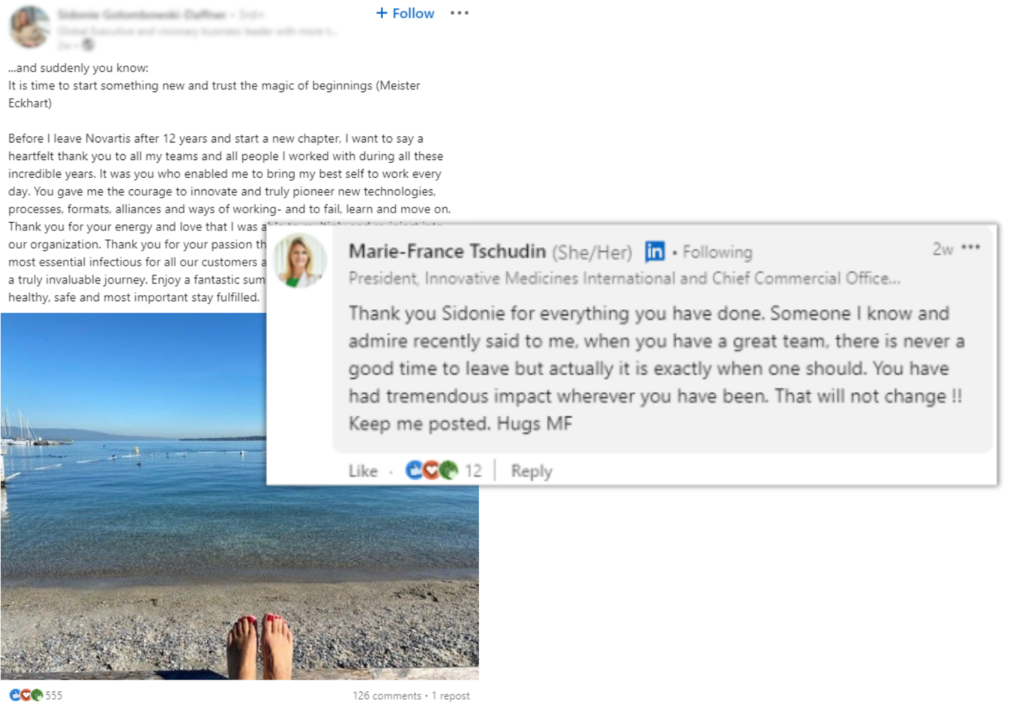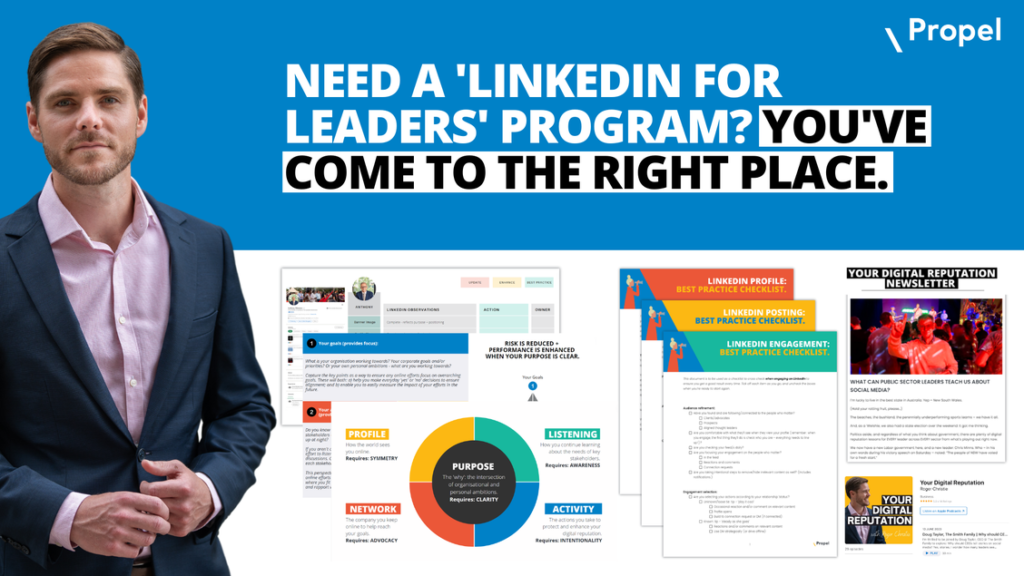
Someone recently asked me if I’d seen the way Marie-France Tschudin – President, Innovative Medicines International & Chief Commercial Officer at Novartis – uses LinkedIn.
I hadn’t.
Now I have, and I’m an enormous fan.
Because, regardless of what sector you work in – or whether you’ve even heard of Marie-France or not – the way she uses LinkedIn typifies the way leaders should approach the platform. Her use of comments, in particular, stands out.
Because LinkedIn is not a broadcast channel – it’s a RELATIONSHIPS channel. And relationships aren’t built by talking at people…
So, whatever your views on or use of comments today, take a moment now to learn why they are an incredibly valuable, scalable and powerful way to build relationships with your most important audiences.

Just so we’re all on the same page, talking about yourself while ignoring the views of others is not an effective strategy to win friends and influence people. (Thank you, Carnegie.)
So, why do so many people use LinkedIn that way?
In a world that is too often called out for being full of self-interest and ladder climbing, how powerful might these ‘counter cultural’ actions be:
– Reacting to a team member’s post. Yep – a simple thumbs up.
– Sending a connection request to new grads. Or anyone in your org!
– Taking the time to reply thoughtfully to a colleagues’ post. A comment that shows you really know them.
None of these are grand acts, but they all demonstrate good leadership.
As Dr Kirstin Ferguson AM said in our podcast earlier this year: “Leadership is simply a series of moments, and every moment gives you the opportunity to leave a positive legacy for those you lead.”
Small actions are powerful. And – crucially for you – those actions are even more powerful online.
Let’s bring Marie-France in here.
I was scrolling through Marie-France Tschudin’s activity feed on LinkedIn the other day.
This is a very senior executive at the height of her powers, with a global remit. She’s busy.
This is a very senior executive with almost 60,000 followers and ‘Top Voice’ status on LinkedIn. She’s respected.
This is a very senior executive who spends far more time on LinkedIn recognising others than sharing her own thoughts. She’s attentive.
Over the course of just one week:
Three of her own posts, one of which was a repost supporting a colleague’s achievement;
Twelve comments, none automated or generic; and
Fifteen reactions, focused on staff and industry peers.
This is best practice.
So, if you’re looking for best practice, head to LinkedIn now. Follow Marie-France and, over the coming weeks, see how well she uses LinkedIn to build relationships with the key people in her world. (Relationships that are essential when it comes to ensuring important announcements are heard – more on that below).
The above comment, for example. It may have taken her 30 seconds to write, but it’s laced with years of history and context that shows this leader knows – and cares – about those around her. Even when they leave.
Do your comments do this?

For leaders who want to use LinkedIn to build relationships with – and influence – key audiences, Marie-France’s approach provides a helpful ratio for how best to prioritise your efforts.
15 reactions, 12 comments, 3 posts. (Or 5-4-1 when broken down.)
That’s 90% engagement, 10% posting.
Forget 80/20 – this is the 90/10 rule.
For every single post you make, you should be engaging with nine other posts. 10% focused on what you want to say, 90% focused on what others are saying.
To be clear, not 90% random things that pop up in your feed to meet a number – 90% intentional engagement choices.
Why?
Three important reasons:
1. The LinkedIn algorithm. If ‘you are what you eat on LinkedIn’ (as we’ve talked about before), then it’s important to ensure you’re intentional with your time and activities. By engaging with key people only, they are more likely to appear in your feed. If they respond to your engagement, you are more likely to appear in their feed. This is the single most important aspect to understand (see why below).
2. Talent attraction + retention. When you comment on staff posts, you give them kudos in front of your network and theirs. That’s powerful. And every time you engage with them, you send a message – what they do matters. That’s powerful. Furthermore, your efforts are visible for anyone to see. Not for your own ego, but to ensure quality talent see your culture loud and clear when considering their next move – 80% of candidates are watching your choices from the LinkedIn sidelines.
3. Being heard when you REALLY need it. This is where it all comes together. So many leaders think their posts are their most prized LinkedIn possession. Nope. Your network and your engagement activities are FAR more valuable. If you want to be seen and heard by key people, you must make the effort to engage with their content first. Otherwise, you’re simply spraying and praying.
Every time you have one important thing to say, make sure you’ve taken nine actions to get the right people listening.
Make sure LinkedIn is part of your leadership toolkit.
Every action you take online – big or small – matters. Every action leaves an indelible mark of your leadership and character. It’s there for the world to see – just google your name.
If you look at examples like Marie-France and wonder ‘How can I do that, too?’, this is where the Your Digital Reputation program for leaders comes in.
If you have LinkedIn but aren’t really using it; if you’re spending time on the platform and wondering why you aren’t getting any results; or if you need to be seen and heard right now but can’t seem to get cut-through – please drop me a note.
It’s a small investment for a significant return. Growth opportunities, team engagement, and protecting your most valuable professional asset: your reputation.
As we’ve seen in this newsletter – small actions are powerful, and they’re yours to take.
Take care in the meantime,
Roge

Want more just like this delivered straight to your inbox? Join hundreds from around the world receiving Roger Christie’s latest digital reputation advice, trends and the best practice examples of the leaders getting it right online. We’d love to have you part of this growing community.

